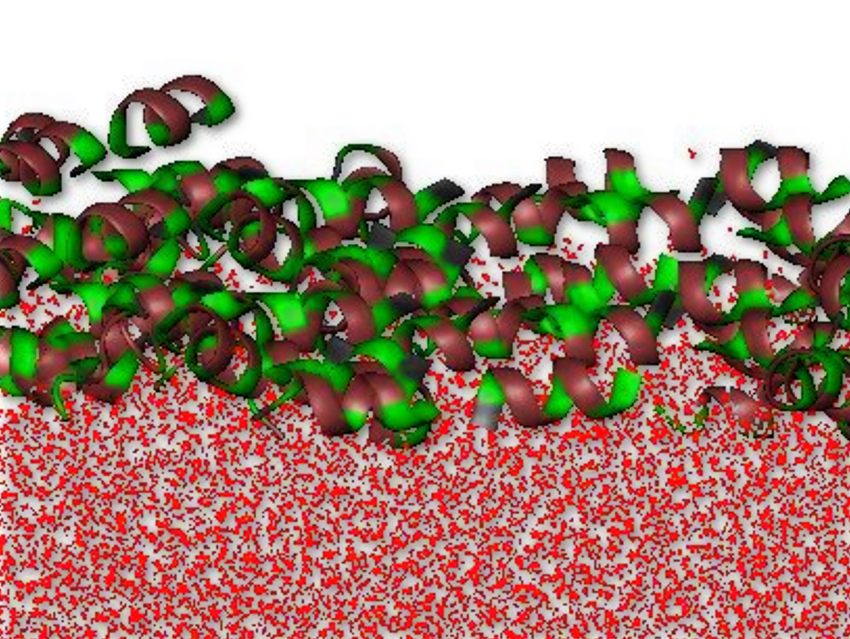Peptides have distinct advantages for materials science: They are biocompatible, can be easily engineered, and are intrinsically chiral building blocks that give rise to hierarchical self-assembly. These properties allow the morphology of supramolecular architectures to be controlled by the specification of the peptide sequence to form nano- (helices, and sheets) and mesoscopic structures (fibrils, rods, and nanotubes).
Marta De Zotti, University of Padua, Italy, Mariano Venanzi, University of Rome Tor Vergata, Italy, and co-workers have synthesized a conformationally constrained analog of the naturally occurring antimicrobial peptide Trichogin GA IV. In the new analog (TrGAr), all the flexible Gly residues of the parent peptide were substituted with helicogenic Aib and Leu residues. The formation of peptide films at the air/water interface and their deposition on a graphite or a mica substrate were investigated.
The effects of the conformational restrictions in the self-assembly process of Trichogin GAIV translated into significant changes in the formation of nanometric peptide films. While the naturally occuring TrGA forms only globular structures independently of the nature of the solid support, the synthetic TrGAr promotes the formation of extended flat regions on mica.
only the fully-developed helical structure of the analogue promotes formation of ordered aggregates nucleating the growth of These micrometric rods give rise to homogenous coating over wide regions of the hydrophilic mica. This is a result of the coalescence of micrometric rods.This shows that importance of helix flexibility on peptide self-organization and orientation on surfaces – key steps in the design of bio-inspired organic/inorganic hybrid materials.
According to the researchers, this finding represents a key step in the design of new devices based on organic/inorganic hybrid materials.
- Controlling the Formation of Peptide Films: Fully-Developed Helical Peptides Are Required to Obtain a Homogenous Coating over a Large Area,
Mariano Venanui, Marta De Zotti, Gabriele Corvi, Emanuela Gatto, Benedetta Di Napoli, Claudia Mazzuca, Antonio Palleschi, Ernesto Placidi, Barbara Biondi, Marco Crisma, Fernando Formaggio, Claudio Toniolo,
ChemPlusChem 2019.
https://doi.org/10.1002/cplu.201900456




